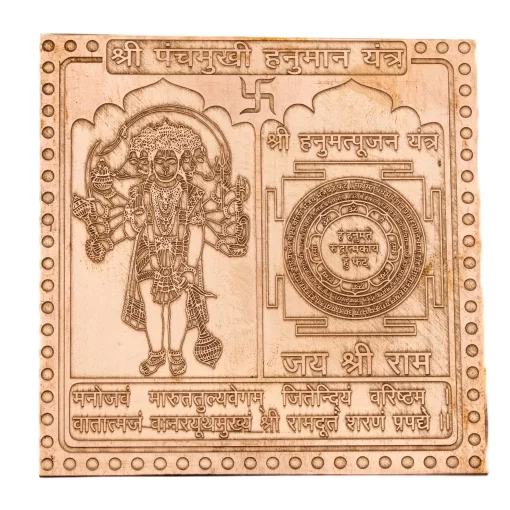Wavs
7 Chiranjeevi

The concept of the Chiranjeevis, also known as the “immortals” or “eternals,” originates from Hindu mythology. These are seven legendary figures who are believed to be immortal, living through multiple ages of mankind. Each Chiranjeevi is revered for their unique qualities and contributions to Hindu mythology and culture. Here’s a brief description of each:
-
Ashwatthama: Son of Dronacharya, the royal guru to the Kauravas and Pandavas in the Mahabharata. Ashwatthama is known for his invincibility in battle and is cursed to roam the earth with a perpetual wound as punishment for his role in the massacre of the Pandavas’ sons.
-
King Mahabali: Also known as Bali, he was a generous and virtuous king who ruled over Kerala. He was renowned for his devotion and charity but was subdued by Lord Vishnu in his Vamana (dwarf) avatar, though he was granted immortality and allowed to visit his kingdom once a year during Onam.
-
Veda Vyasa: Traditionally credited as the compiler of the Vedas and the author of the Mahabharata, Puranas, and numerous other scriptures. Veda Vyasa is considered one of the greatest sages in Hindu tradition, immortalized for his literary and spiritual contributions.
-
Hanuman: The mighty monkey god known for his unwavering devotion to Lord Rama in the Ramayana. Hanuman possesses immense strength, wisdom, and is revered for his loyalty and devotion, making him a beloved figure in Hinduism.
-
Vibhishana: Brother of Ravana, the demon king of Lanka in the Ramayana. Vibhishana is noted for his righteousness and loyalty to Lord Rama, ultimately defecting from Ravana’s army to join Rama’s cause. He was granted immortality for his virtues.
-
Kripacharya: One of the Maharathis (great warriors) in the Mahabharata and a royal teacher to the Kauravas and Pandavas. Kripacharya is revered for his martial prowess, wisdom, and ethical conduct, earning him the status of a Chiranjeevi.
-
Parashurama: The warrior sage known for wielding an axe, gifted by Lord Shiva. Parashurama is believed to be an avatar of Vishnu, tasked with eliminating the corrupt Kshatriya rulers from the earth several times over, establishing dharma (righteousness) in their place.
These seven Chiranjeevis symbolize various virtues and ideals in Hindu mythology, representing aspects of loyalty, wisdom, valor, righteousness, and devotion. They continue to inspire generations with their stories and teachings, embodying timeless principles that resonate deeply within Hindu culture and spirituality.
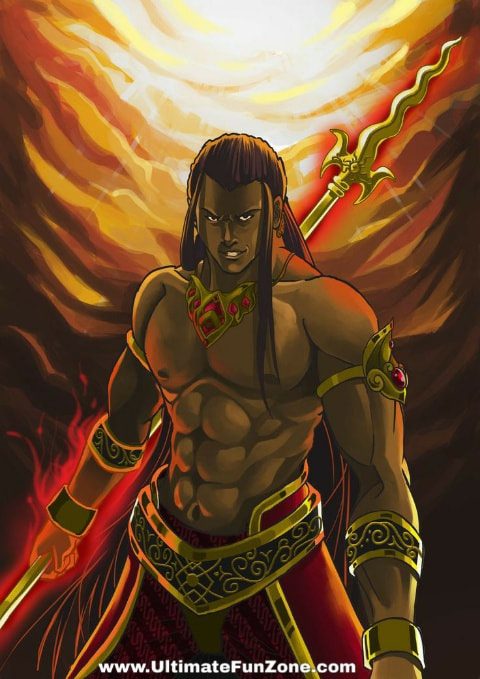
Ashwatthama is a significant figure in Hindu mythology, particularly prominent in the epic Mahabharata. Here’s a detailed exploration of Ashwatthama:
-
Lineage and Background:
- Ashwatthama is the son of Dronacharya, the royal guru (teacher) of the Kauravas and Pandavas, and Kripi, sister of Kripacharya.
- He was born with a gem embedded in his forehead, which granted him supernatural abilities and protection.
-
Role in the Mahabharata:
- Ashwatthama fought on the side of the Kauravas during the Kurukshetra War, the climactic battle of the Mahabharata.
- He was known for his prowess in warfare, especially as a proficient user of celestial weapons.
-
Incident at the End of the War:
- In the final days of the war, after the fall of Duryodhana (leader of the Kauravas), Ashwatthama became filled with rage and grief.
- He unleashed a devastating attack during the night, targeting the Pandava camp to avenge his father’s death and the defeat of the Kauravas.
-
Cursed Immortality:
- After his attack on the Pandavas, Ashwatthama was cursed by Lord Krishna and other sages.
- He was cursed with eternal suffering, where he would roam the earth with a perpetual wound and be in a state of agony without finding death.
-
Later Life and Legends:
- Despite his curse, Ashwatthama continues to exist in Hindu mythology as one of the Chiranjeevis, the immortals.
- He is often depicted as a tragic figure, tormented by his actions during the war and the consequences of his curse.
-
Symbolism and Legacy:
- Ashwatthama symbolizes the complexities of loyalty, revenge, and the consequences of unchecked anger.
- His story serves as a cautionary tale about the destructive power of emotions and the importance of righteous conduct even in the face of adversity.
-
Cultural Significance:
- Ashwatthama remains a revered but controversial figure in Hindu culture, inspiring various interpretations and moral lessons.
- His character continues to be studied and debated within the context of Hindu ethics and mythology, reflecting deeper philosophical themes of dharma (righteousness) and karma (action).
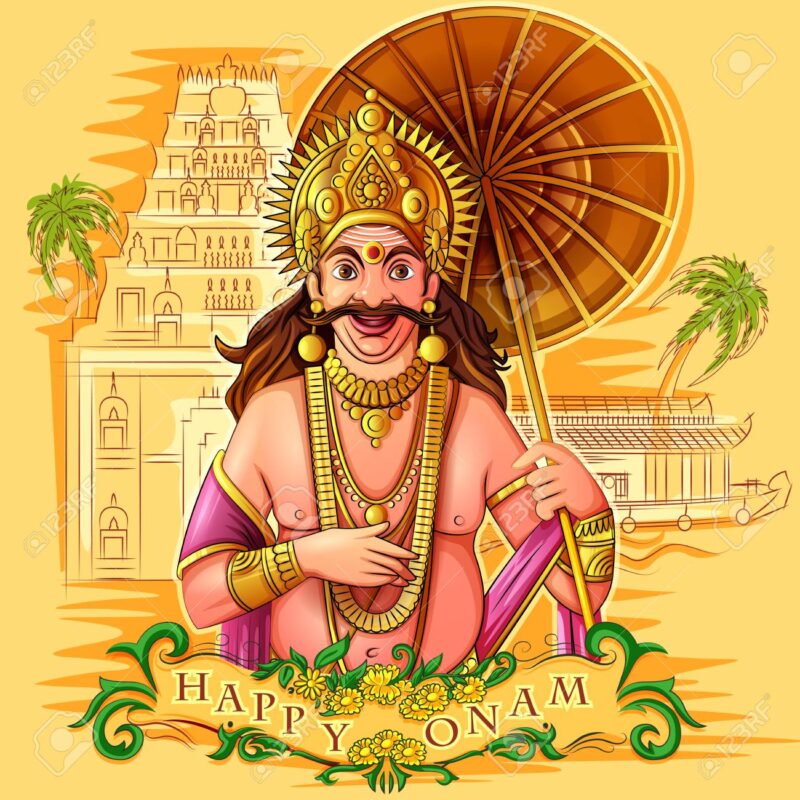
King Mahabali, also known simply as Bali, is a revered figure in Hindu mythology, particularly celebrated in the southern Indian state of Kerala. Here’s a detailed overview of King Mahabali:
-
Lineage and Background:
- Mahabali was born in the lineage of the demon king Prahlada, who was a devotee of Lord Vishnu despite being born to the demon Hiranyakashipu.
- He was known for his valor, righteousness, and generosity from a young age.
-
Conquest and Rule:
- Mahabali became a powerful king, ruling over Kerala (known as the ancient kingdom of Kerala or Keralapura).
- Under his rule, the kingdom prospered, and he earned the title of “Mahabali,” meaning “great sacrifice” or “great offering.”
-
Vamana Avatar Incident:
- According to Hindu mythology, Mahabali’s fame and power grew so much that it concerned the gods, particularly Lord Indra.
- Lord Vishnu, in his Vamana (dwarf) avatar, approached Mahabali during a grand sacrificial ceremony and requested land measuring three paces.
-
Generosity and Devotion:
- Mahabali, known for his unwavering generosity, agreed to grant Vamana’s request, underestimating the dwarf’s divine nature.
- Vamana expanded in size to cover the entire universe in three strides. In doing so, he pushed Mahabali deep into the netherworld, known as Patala.
-
Boon and Return:
- Impressed by Mahabali’s devotion and generosity, Vamana granted him a boon that allowed Mahabali to visit his people once a year.
- This annual visit, known as Onam, is celebrated as a harvest festival in Kerala and symbolizes Mahabali’s return to his kingdom and his people’s happiness.
-
Symbolism and Legacy:
- Mahabali symbolizes the ideals of sacrifice, devotion, and generosity in Hindu mythology.
- His story exemplifies the transient nature of power and the importance of humility and righteousness in the pursuit of dharma (righteousness).
-
Cultural Significance:
- Onam, the festival associated with Mahabali, is one of the most significant cultural celebrations in Kerala and is marked by feasts, dance performances, and colorful decorations.
- The story of Mahabali and Vamana continues to be retold through folklore, dance dramas (Kathakali), and other art forms, resonating deeply with the cultural identity of Kerala.
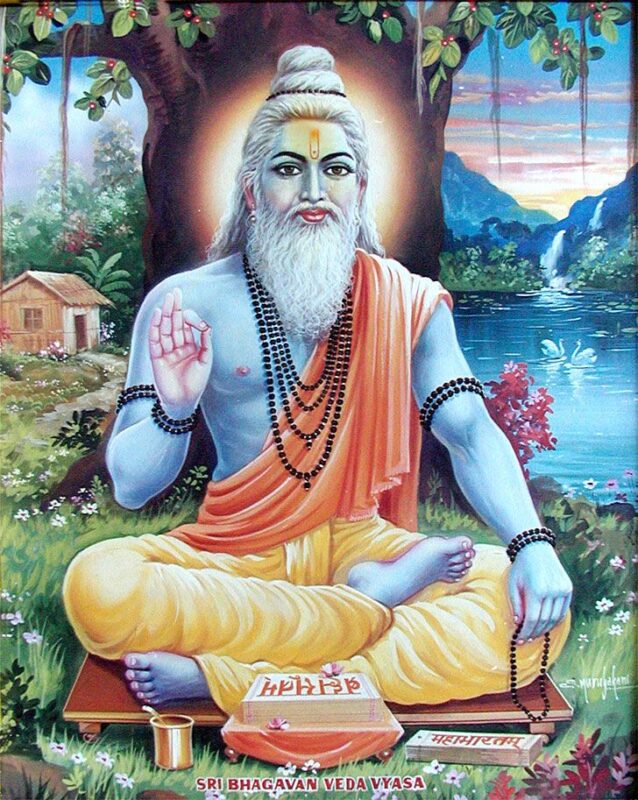
-
Birth and Lineage:
- Veda Vyasa, originally named Krishna Dvaipayana, was born to the sage Parashara and Satyavati (Matsyagandha), a fisherman’s daughter.
-
Contributions:
- He is credited with compiling and arranging the Vedas, hence earning the name Vyasa.
- Authored the Mahabharata, the largest epic in the world, which includes the Bhagavad Gita.
- Also composed the 18 Puranas, foundational texts of Hindu mythology and cosmology.
-
Role in Hinduism:
- Vyasa is revered as a sage of immense wisdom and spiritual insight.
- His literary works are central to Hindu philosophy, ethics, and spirituality.
- He is considered an avatar of Vishnu and plays a pivotal role in many Hindu rituals and traditions.
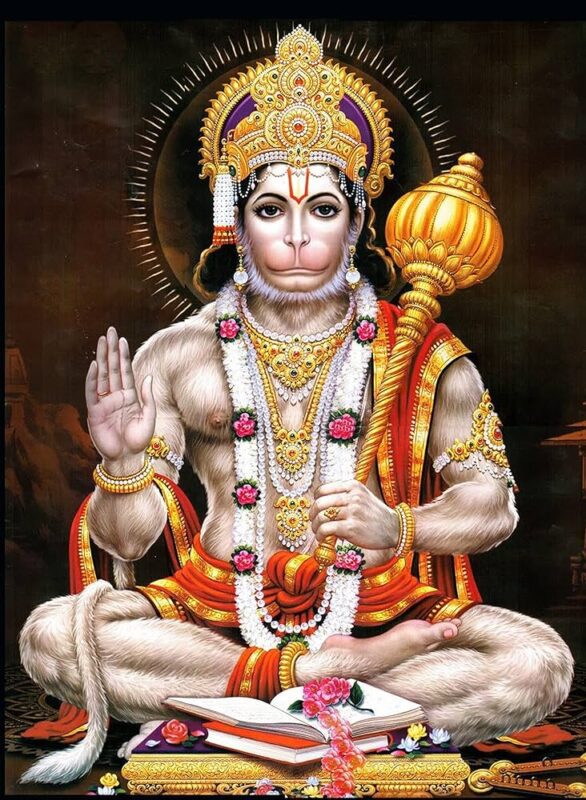
-
Birth and Background:
- Hanuman is the son of Anjana and Kesari, born with the blessings of Lord Shiva.
- He is known for his strength, agility, and wisdom from a young age.
-
Role in Ramayana:
- Hanuman played a pivotal role in the Ramayana, serving as Lord Rama’s devoted companion and messenger.
- He located Sita, Rama’s wife, in Lanka and delivered Rama’s message to her.
-
Powers and Attributes:
- Hanuman possessed supernatural powers, including the ability to change his size, fly, and perform incredible feats of strength.
- He is worshipped for his courage, loyalty, and humility.
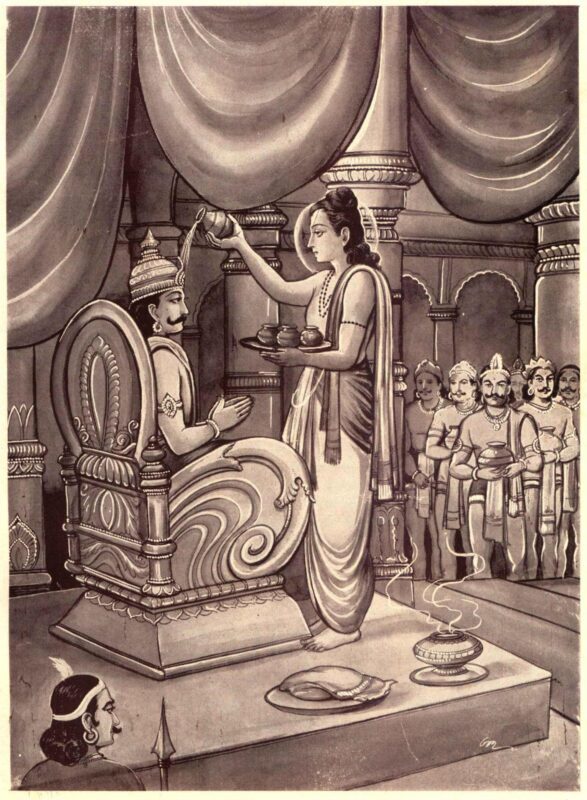
-
Background and Lineage:
- Vibhishana was the younger brother of Ravana, the demon king of Lanka.
- Despite being born into a demon family, Vibhishana was known for his virtuous nature and wisdom.
-
Role in the Ramayana:
- During the Ramayana, Vibhishana disagreed with Ravana’s actions, especially his abduction of Sita, the wife of Lord Rama.
- Vibhishana counseled Ravana to return Sita to Lord Rama and seek his forgiveness to avoid a devastating war.
-
Defection to Lord Rama’s Side:
- When Ravana refused to heed his advice, Vibhishana chose to leave Lanka and seek refuge with Lord Rama.
- Lord Rama, recognizing Vibhishana’s righteousness and good intentions, welcomed him and made him the king of Lanka after Ravana’s defeat.
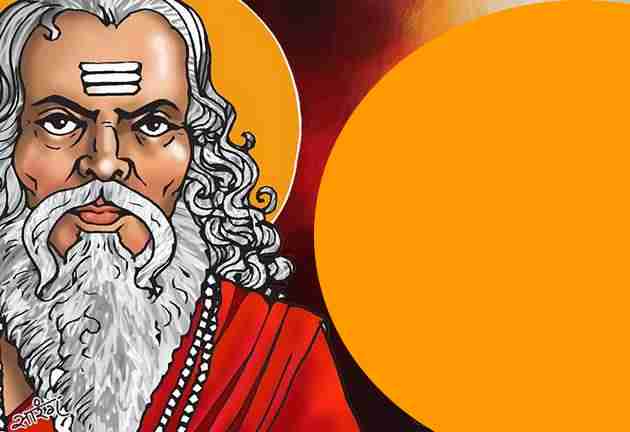
-
Lineage and Background:
- Kripacharya was born to the sage Sharadwan and Janapadi. He was raised alongside his sister Kripi, who later became the wife of Dronacharya.
-
Role in the Mahabharata:
- Kripacharya served as a royal teacher (Guru) to the Kauravas and Pandavas, imparting military skills and knowledge of warfare.
- He fought on the side of the Kauravas during the Kurukshetra War, despite his deep sense of duty and allegiance to dharma.
-
Character and Skills:
- Known for his unwavering loyalty and commitment to righteousness, Kripacharya was a formidable warrior and strategist.
- He possessed expertise in various forms of warfare, including archery and combat.
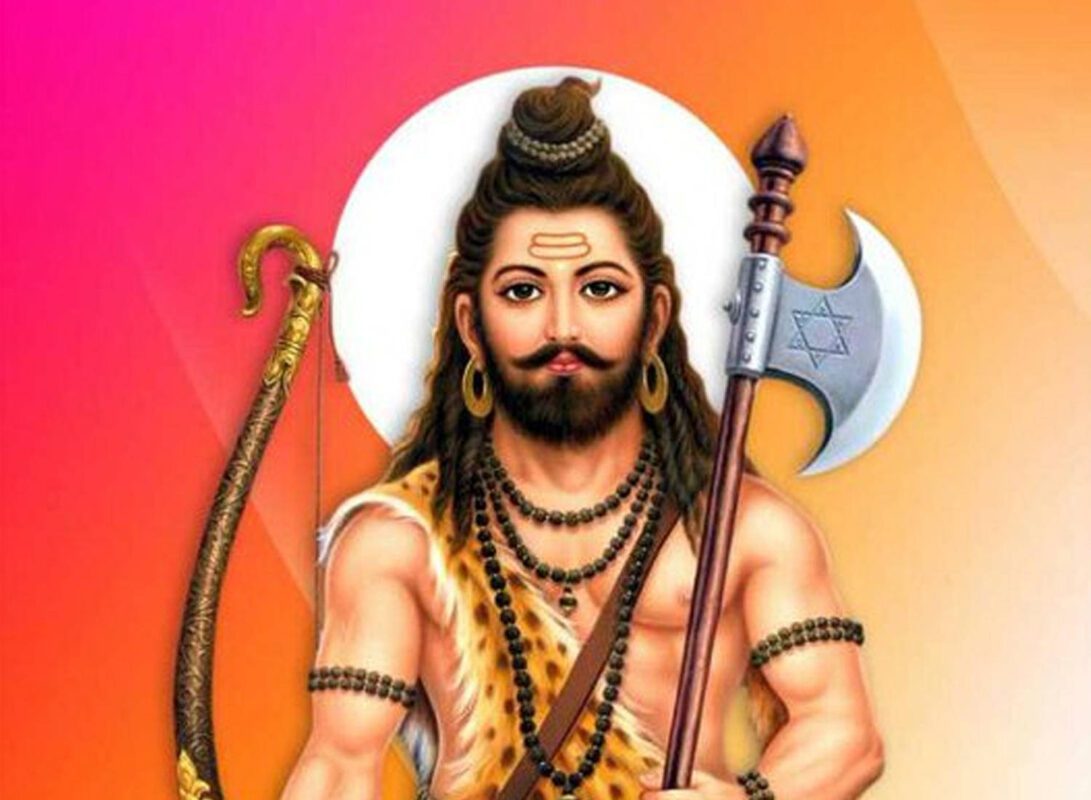
-
Lineage and Birth:
- Parashurama is believed to be an avatar (incarnation) of Lord Vishnu, born to the sage Jamadagni and Renuka.
- His birth name was Jamadagnya.
-
Role in Hindu Epics:
- Parashurama is prominently featured in the Mahabharata and other Hindu texts.
- He is known for carrying an axe (parashu) gifted by Lord Shiva, hence his name “Parashurama.”
-
Feats and Attributes:
- Parashurama was an unparalleled warrior, skilled in archery, martial arts, and warfare.
- He is celebrated for defeating numerous Kshatriya warriors to cleanse the earth of their arrogance and corruption.

